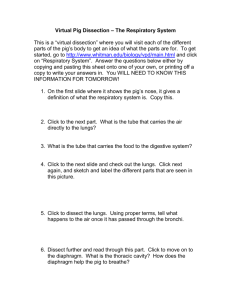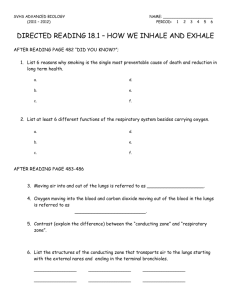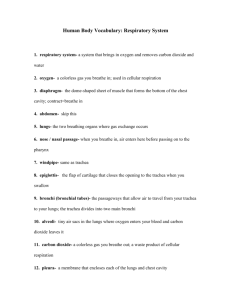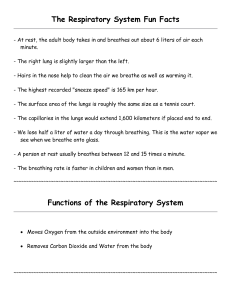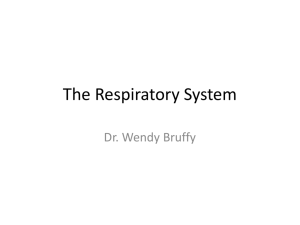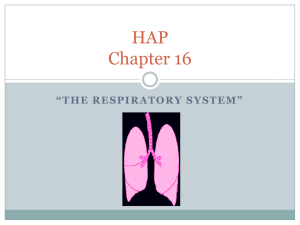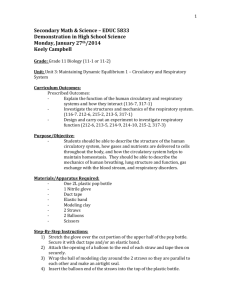Respiratory System Worksheet: Definitions & Functions
advertisement
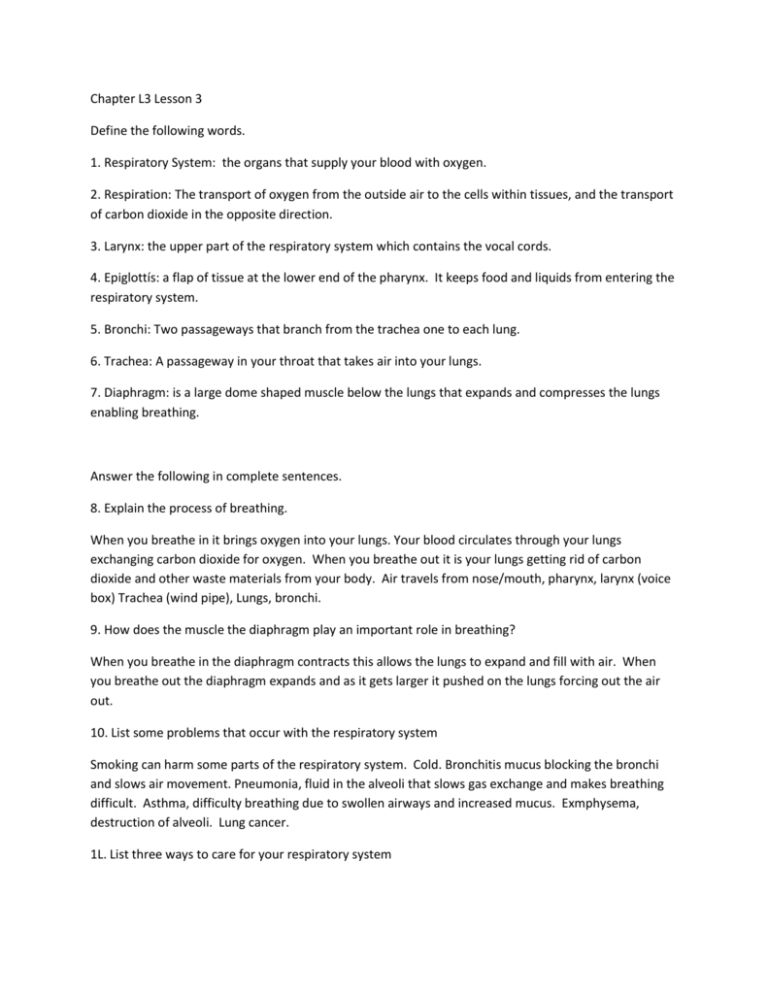
Chapter L3 Lesson 3 Define the following words. 1. Respiratory System: the organs that supply your blood with oxygen. 2. Respiration: The transport of oxygen from the outside air to the cells within tissues, and the transport of carbon dioxide in the opposite direction. 3. Larynx: the upper part of the respiratory system which contains the vocal cords. 4. Epiglottís: a flap of tissue at the lower end of the pharynx. It keeps food and liquids from entering the respiratory system. 5. Bronchi: Two passageways that branch from the trachea one to each lung. 6. Trachea: A passageway in your throat that takes air into your lungs. 7. Diaphragm: is a large dome shaped muscle below the lungs that expands and compresses the lungs enabling breathing. Answer the following in complete sentences. 8. Explain the process of breathing. When you breathe in it brings oxygen into your lungs. Your blood circulates through your lungs exchanging carbon dioxide for oxygen. When you breathe out it is your lungs getting rid of carbon dioxide and other waste materials from your body. Air travels from nose/mouth, pharynx, larynx (voice box) Trachea (wind pipe), Lungs, bronchi. 9. How does the muscle the diaphragm play an important role in breathing? When you breathe in the diaphragm contracts this allows the lungs to expand and fill with air. When you breathe out the diaphragm expands and as it gets larger it pushed on the lungs forcing out the air out. 10. List some problems that occur with the respiratory system Smoking can harm some parts of the respiratory system. Cold. Bronchitis mucus blocking the bronchi and slows air movement. Pneumonia, fluid in the alveoli that slows gas exchange and makes breathing difficult. Asthma, difficulty breathing due to swollen airways and increased mucus. Exmphysema, destruction of alveoli. Lung cancer. 1L. List three ways to care for your respiratory system Avoiding tobacco use, staying away from people who smoke, take care of your body, drink plenty of fluids, being physically active on a regular basis, eating a healthy diet, paying attention to weather alerts for your area, managing stress, protecting yourself from infection. Critical Thinking Question 12. Duchenne Muscular Dystrophy is a disease where your body does not produce enough of a protein called dystrophín. This protein is needed to make muscles work. The disease affects only boys and puts them in a wheelchair usually by the age of 10.The longest they can live is age 30. lt also puts them on a ventilator near the end of their life. Knowing what you know about the respiratory system, why would Duchenne's cause someone to be placed on a ventilator? Because the diagram is a muscle and if that muscle cannot work then a person would not be able to inflate or deflate their lungs supplying them with oxygen. 13. Draw the respiratory system including the


